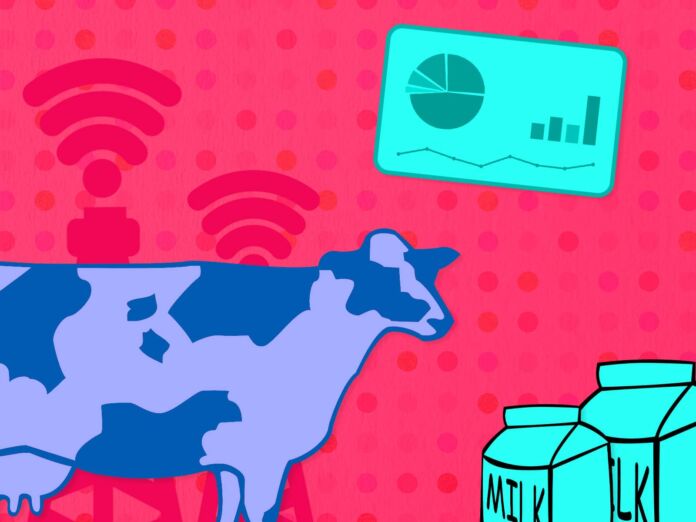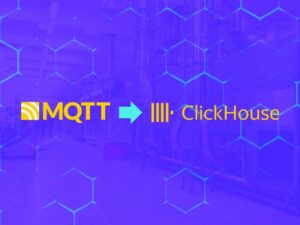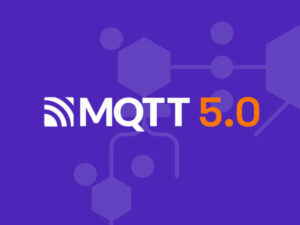
By the year 2050, the world’s population is projected to reach 9.8 billion. Making food production as efficient as possible is not just an economic challenge; it is also a global urgency.
However, unable to escape this catch-22, cattle farming is also affected by climate change, as heat negatively impacts milk production.
To help food producers tackle future challenges, farmers will have to embrace disruptive technologies that may seem foreign to the agricultural world. The Internet of Things (IoT), artificial intelligence algorithms, machine learning, and genetic modifications are becoming increasingly relevant for professionals in the sector.
Intuition, built over years of experience, must now be supplemented with the certainty provided by data through technology.
A Real-Life Example
The Voshazhnikovo Farm in Russia has transformed into a “smart farm” to increase its milk production. The farm has a capacity of approximately 8,000 heads of cattle, including 4,500 dairy cows. Before the implementation of IoT, the farm used to produce 125 tons of milk daily, averaging nearly 28 liters per cow per day.
The farm equipped its veterinarians with additional information about environmental conditions such as temperature, humidity, pressure, cow health, and other parameters. They discovered that the rising temperatures due to increasingly frequent heatwaves affected the cows’ appetite, resulting in increased feed and food expenses. Thus, they decided to leverage this information to feed their livestock more efficiently.
Technology partners installed environmental sensors inside the farm to collect data on temperature, pressure, humidity, and lighting conditions experienced by the cows. This information is transmitted via LoRaWAN connectivity to the farm’s ERP system, where it is added to the dataset along with external information (anemometer, temperature, humidity, precipitation), RFID tags, food purchase records, veterinarians’ Excel reports, and various external data sources.
All this data is sent to the farm’s cloud platform. Machine learning and business intelligence techniques are applied to help the staff and owners make better decisions.
The IoT project is designed to predict herd reproduction, milk production, and animal diseases based on a combination of external and internal factors, statistical data, economic indicators, staff information, and laboratory data. This not only reduces costs associated with maintaining cow health, labor, and reproduction but also helps achieve strategic business goals, such as expanding production and opening new units.
As a result, a correlation was found between temperature, nutrition, and even the daily performance of farm workers. The owners discovered that when the temperature decreases on the farm, the cows require more feed.
The system alerts the staff to these changes, and farmers receive notifications via email or SMS. With proper feeding, milk production increases.
Award-Winning Efficiency
As a result, Voshazhnikovo’s smart farm achieved better figures: savings on feed costs for 2,000 dairy cows amounted to €340,000 over 180 days. In other words, three months after implementing the IoT system, milk production at Voshazhnikovo Farm increased to 33 liters per cow per day, an impressive 18 percent more than the previous months (28 liters per cow per day).
Furthermore, to certify their progress, Voshazhnikovo received the “Best Innovation” award in the “Efficiency” category at the Annual Danone Forum.
- SEO Powered Content & PR Distribution. Get Amplified Today.
- PlatoData.Network Vertical Generative Ai. Empower Yourself. Access Here.
- PlatoAiStream. Web3 Intelligence. Knowledge Amplified. Access Here.
- PlatoESG. Automotive / EVs, Carbon, CleanTech, Energy, Environment, Solar, Waste Management. Access Here.
- BlockOffsets. Modernizing Environmental Offset Ownership. Access Here.
- Source: https://www.iotforall.com/iot-can-help-increase-cow-milk-production
- :has
- :is
- :not
- :where
- 000
- 1
- 180
- 2050
- 28
- 33
- 500
- 8
- 9
- a
- About
- Achieve
- achieved
- added
- Additional
- Additional Information
- After
- Agricultural
- alerts
- algorithms
- along
- also
- an
- and
- animal
- annual
- appetite
- applied
- approximately
- ARE
- artificial
- artificial intelligence
- AS
- associated
- At
- averaging
- award
- based
- BE
- becoming
- before
- Better
- between
- Billion
- built
- business
- business intelligence
- but
- by
- CAN
- Capacity
- Category
- certainty
- certify
- challenge
- challenges
- change
- Changes
- Climate
- Climate change
- Cloud
- Cloud Platform
- collect
- combination
- conditions
- Connectivity
- Correlation
- Costs
- daily
- dairy
- data
- day
- Days
- decided
- decisions
- decreases
- designed
- discovered
- diseases
- disruptive
- due
- Economic
- economic indicators
- efficient
- efficiently
- embrace
- environmental
- equipped
- ERP
- escape
- Even
- Excel
- expanding
- expenses
- experience
- experienced
- external
- factors
- farm
- farmers
- farming
- feeding
- Figures
- food
- For
- foreign
- Forum
- found
- frequent
- future
- Global
- Goals
- Have
- heads
- Health
- help
- helps
- HTTPS
- Impacts
- implementation
- implementing
- impressive
- in
- In other
- Including
- Increase
- increased
- Increases
- increasingly
- Indicators
- information
- inside
- Intelligence
- internal
- Internet
- internet of things
- into
- iot
- IT
- ITS
- jpg
- just
- labor
- laboratory
- learning
- Leverage
- Lighting
- LoRaWAN
- machine
- machine learning
- maintaining
- make
- Making
- max-width
- May..
- Milk
- Modifications
- months
- more
- must
- nearly
- negatively
- New
- notifications
- now
- nutrition
- of
- on
- only
- opening
- or
- Other
- over
- owners
- parameters
- partners
- per
- percent
- performance
- platform
- plato
- Plato Data Intelligence
- PlatoData
- population
- possible
- predict
- pressure
- previous
- produce
- Producers
- Production
- production increases
- professionals
- Progress
- project
- projected
- proper
- provided
- purchase
- reach
- receive
- received
- records
- reduces
- relevant
- Reports
- reproduction
- require
- result
- resulting
- rising
- Russia
- Savings
- sector
- seem
- sensors
- sent
- smart
- SMS
- Sources
- Staff
- statistical
- Strategic
- strategic business
- such
- system
- tackle
- techniques
- Technologies
- Technology
- than
- that
- The
- their
- These
- they
- things
- this
- three
- Through
- Thus
- to
- tons
- transformed
- unable
- units
- urgency
- used
- various
- via
- was
- when
- will
- with
- words
- workers
- world
- world’s
- year
- years
- zephyrnet







